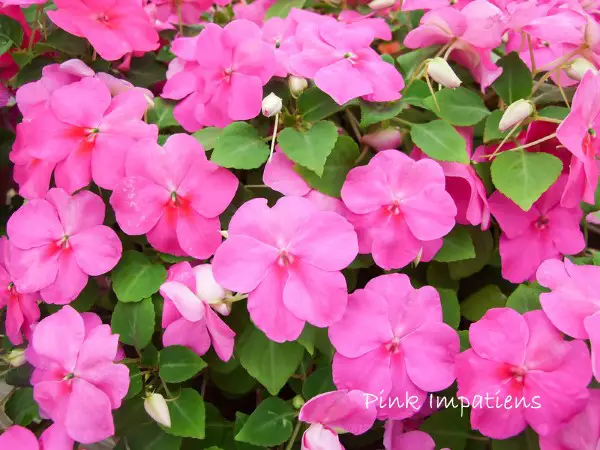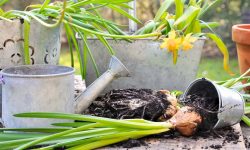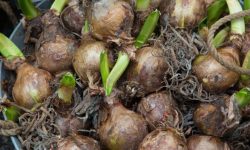With their vibrant colors and lush foliage, impatiens have long been beloved staples in shade gardens, hanging baskets, and bright containers. These charming flowers can instantly breathe life into quiet corners and shaded beds, creating a soothing yet cheerful display that lasts through the growing season. Whether you’re drawn to the soft pastels or the bold, saturated hues, impatiens bring effortless beauty to any space they grace.
But one common question continues to puzzle many gardeners: Are impatiens annuals or perennials? The answer isn’t as straightforward as it seems. It depends not only on the type of impatiens you’re growing but also on your local climate. Understanding how impatiens behave in different regions can help you make the most of these flowers—whether you’re planning for a single season or looking to enjoy their blooms year after year.
Impatiens as Annuals in Cooler Climates

In regions where winter temperatures drop below freezing, impatiens are most often grown as annuals. These plants are highly sensitive to cold and will not survive frost. As the first signs of chill appear—especially in USDA hardiness zones 6 and below—impatiens begin to decline rapidly. Gardeners in these areas typically plant them in late spring, after the danger of frost has passed, and enjoy their vibrant blooms throughout summer and early fall.
Because they grow quickly from nursery starts or seeds, impatiens are ideal for seasonal color in borders, containers, and shaded garden beds. They don’t require a long growing season to put on a brilliant show, which makes them a perfect fit for climates with shorter summers. However, once nighttime temperatures dip consistently into the 40s°F (4–9°C), their growth slows, and flowers fade quickly. At that point, most gardeners allow the plants to complete their natural cycle and replant new ones the following year.
For those who fall in love with their impatiens each summer, there is still hope for extending their beauty indoors. By digging up healthy plants and potting them before the first frost, or by taking stem cuttings in late summer, gardeners in cooler climates can overwinter impatiens and enjoy fresh new growth the next spring.
Impatiens as Perennials in Warm Climates
In frost-free regions, particularly USDA hardiness zones 10 and above, impatiens can thrive as true perennials. These climates offer the mild temperatures and consistent warmth impatiens need to grow year-round, allowing them to flower repeatedly without the threat of frost damaging their delicate stems and leaves. In these areas, impatiens can become a long-lasting part of the garden landscape, returning season after season with minimal replanting.
When grown as perennials, impatiens benefit from occasional pruning to maintain a compact shape and encourage new blooms. Without cold weather to reset their growth, the plants may become leggy or overgrown over time. Light trimming every few months revitalizes their appearance and prevents them from becoming woody at the base.
Regular feeding is also important in warm climates, as impatiens are heavy bloomers and can deplete soil nutrients quickly. A balanced fertilizer applied every few weeks keeps them vibrant and healthy. Moisture management is essential too—while impatiens love moisture, overly wet soil in humid regions can lead to root rot or mildew. Well-draining soil and good air circulation help prevent these problems.
In tropical or subtropical gardens, impatiens can even naturalize in shaded areas, spreading gently to fill flower beds or woodland edges. With a little care, these perennials will reward gardeners with lush foliage and colorful blooms throughout the year, making them a staple for long-term garden beauty in warmer zones.
Identifying the Right Type of Impatiens for Your Garden
Choosing the ideal impatiens variety for your garden involves more than just picking your favorite color. Different species and hybrids of impatiens have unique growth habits, sunlight needs, and climate tolerances—factors that can greatly impact their long-term success in your space.
Consider Your Garden’s Sun Exposure
Traditional impatiens (Impatiens walleriana) are beloved for their ability to thrive in full to partial shade, making them perfect for areas under trees, along shady borders, or beside buildings. However, they can struggle in direct sun, especially in hotter climates, where their leaves may scorch or wilt.
If your garden receives several hours of direct sunlight, New Guinea impatiens (Impatiens hawkeri) are a better choice. These hybrids tolerate more sun and heat, and they offer larger flowers and thicker, glossier leaves. They’re ideal for partially sunny patios, containers, or flower beds with filtered light.
Match the Plant to Your Climate
In cooler climates, most impatiens varieties are grown as annuals, blooming from spring to the first frost. If you’re in a warm or frost-free zone, you can enjoy perennial performance from certain types, especially those bred for disease resistance and extended growing seasons.
Look for varieties like SunPatiens, a hybrid developed specifically for full sun and warmer weather. These are more robust, heat-tolerant, and often more resistant to downy mildew than traditional impatiens. They’re excellent for large displays, borders, and tropical-style plantings.
Think About Growth Habit and Size
Impatiens also vary in height and spread. Some stay compact—great for edging paths or planting in small containers—while others have a mounding or trailing habit, perfect for hanging baskets or window boxes. Knowing how tall and wide a plant will grow helps you design with intention and avoid overcrowding.
Choosing the right impatiens type means balancing aesthetics with practical factors like sun, climate, and space. When matched correctly, the result is a vibrant, low-maintenance display that thrives effortlessly in your garden setting.
How Climate Influences Impatiens Longevity
Climate plays a defining role in determining whether impatiens behave as short-lived annuals or long-lasting perennials in your garden. Temperature, humidity, and seasonal changes all affect how long these popular flowering plants can survive and bloom.
Temperature: The Primary Factor in Survival
Impatiens are highly sensitive to frost and cold temperatures. In regions where winter temperatures consistently drop below freezing, even briefly, impatiens typically die off once the first frost hits. In these cooler climates—USDA zones 1 through 8—impatiens are treated as annuals, replanted each spring after the danger of frost has passed.
In contrast, gardeners in frost-free or tropical areas, especially USDA zones 10 and 11, can grow impatiens year-round. Here, the plants don’t face the seasonal dieback caused by cold, allowing them to persist for several years. With consistent warmth and moisture, impatiens in these climates often grow bushier and more robust over time, behaving like true perennials.
Humidity and Moisture Matter
Besides temperature, humidity and rainfall also influence impatiens longevity. These plants naturally thrive in humid environments with well-drained, moist soil. High humidity supports lush, continuous growth, helping the plants maintain vigor and flower production over longer periods.
However, in hot, dry climates, impatiens may experience stress, leading to wilting, leaf drop, or shortened life cycles. Even in warmer zones, dry air and infrequent watering can turn potential perennials into temporary annuals. Consistent irrigation and mulching are key to sustaining them through dry spells.
Seasonal Transitions Affect Growth Patterns
Even in climates mild enough for impatiens to survive year-round, seasonal changes can impact how well they grow. In the heat of summer, impatiens might slow down or even pause blooming if temperatures exceed 90°F (32°C) regularly. During such stress, their energy goes into survival, not flowering.
On the other hand, during cooler months—if frost isn’t a concern—impatiens can enter a semi-dormant phase, slowing down growth but bouncing back with warmer weather. Knowing your local seasonal patterns helps you manage expectations and adapt care routines accordingly.
Understanding how climate shapes the life span of impatiens empowers gardeners to plan wisely—whether planting anew each year or nurturing vibrant, long-lasting displays that return with each season.
Seasonal Care for Annual Impatiens
Caring for annual impatiens throughout the growing season ensures vibrant blooms and healthy foliage until frost. Begin in spring by planting after all danger of frost has passed, in well-draining soil enriched with compost. Choose a location with partial shade, as too much sun can scorch the delicate leaves.
During summer, consistent watering is crucial—impatiens prefer moist but not soggy soil. Feed them every few weeks with a balanced, water-soluble fertilizer to encourage continuous flowering. Pinch back leggy stems to maintain a compact, bushy shape.
As fall approaches and temperatures drop, monitor the forecast. The first frost signals the end of the season for annual impatiens. Before that happens, you can collect cuttings or bring potted plants indoors to extend their life. Compost spent plants or clear them out promptly to prevent disease carryover to the next season.
How to Overwinter Impatiens Successfully
Overwintering impatiens allows you to enjoy your favorite varieties year after year, especially in colder regions. The most effective method is to bring healthy potted plants indoors before the first frost. Place them in a bright room with indirect sunlight and maintain temperatures above 55°F (13°C). Water sparingly during winter, allowing the top inch of soil to dry out between waterings.
Alternatively, you can take stem cuttings before frost and root them in water or moist potting mix. Once rooted, transfer them to small containers and grow them indoors over winter. This method saves space and gives you fresh plants to transplant in spring.
Whichever method you choose, keep an eye out for pests like aphids or spider mites. Rinse the leaves occasionally and remove any yellowing foliage to maintain plant health indoors. When spring returns and outdoor temperatures are stable, reintroduce impatiens gradually to the garden to avoid shock.
Feeding for Continuous Blooms
To keep impatiens flowering vigorously throughout the growing season, proper feeding is essential. These plants are heavy bloomers and need regular access to nutrients to maintain lush foliage and colorful flowers. Begin by incorporating a slow-release balanced fertilizer into the soil at planting time. This creates a nutrient-rich foundation that supports early growth and initial blooming.
As the season progresses, supplement with a water-soluble fertilizer every two to three weeks. Choose a formula that’s balanced or slightly higher in phosphorus, such as 10-20-10, to promote consistent blooming rather than excessive foliage. Always water the plants before and after feeding to prevent root burn and ensure even nutrient absorption.
If you’re growing impatiens in containers, they will need more frequent feeding due to quicker nutrient depletion. In this case, a biweekly liquid feeding schedule is ideal. Be mindful not to over-fertilize, as this can lead to leafy growth at the expense of blooms. By staying consistent with feeding and adjusting to your plant’s needs, you can enjoy a steady display of vibrant impatiens flowers from spring to fall.
Pinching and Pruning Techniques
Pinching and pruning are simple yet powerful techniques to encourage bushier growth and more blooms in impatiens. Start by pinching back the tips of young plants when they are about 4 to 6 inches tall. Use your fingers to remove the top inch of the growing stem. This action stimulates the plant to branch out, creating a fuller, more compact shape with increased flowering potential.
Throughout the season, continue to lightly pinch or prune any leggy or overgrown stems. Regular pruning helps maintain a neat appearance and prevents the plant from becoming spindly. If flowers begin to fade or growth slows in midsummer, trimming the plant back by one-third can rejuvenate it and trigger a new flush of blooms.
Always use clean, sharp scissors or pruners for larger stems to prevent disease. Avoid cutting more than one-third of the plant at a time to minimize stress. With regular pinching and selective pruning, impatiens will stay lush, well-shaped, and flower continuously all season long.
Managing Common Pests and Diseases
Impatiens are generally low-maintenance, but they can still fall victim to several common pests and diseases, especially in humid or overcrowded conditions. Regular monitoring and good garden hygiene are key to preventing issues before they spread.
Aphids, spider mites, and whiteflies are the most frequent insect pests. These tiny bugs suck sap from the leaves and stems, causing yellowing, curling, or stunted growth. If detected early, they can be controlled with insecticidal soap, neem oil, or by simply hosing them off with water.
Downy mildew is the most serious disease affecting impatiens, especially the popular Impatiens walleriana variety. It causes yellowing leaves, white fuzzy growth on leaf undersides, and eventual plant collapse. Once infected, the disease is hard to control, so prevention is critical. Avoid overhead watering, ensure good air circulation, and choose mildew-resistant varieties like New Guinea impatiens when possible.
Other fungal diseases such as root rot and gray mold can occur in soggy soil or poorly drained pots. To prevent these, water early in the day, let the soil dry slightly between waterings, and remove any dead or decaying plant matter promptly.
By staying vigilant, using proper watering practices, and spacing plants well, you can enjoy healthy, vibrant impatiens all season without major pest or disease problems.
Mulching for Moisture and Weed Control
Mulching around impatiens is one of the simplest yet most effective ways to create a healthy and low-maintenance growing environment. A layer of organic mulch helps retain soil moisture by reducing evaporation, which is especially beneficial during hot summer days when impatiens are prone to wilting.
In addition to conserving moisture, mulch helps regulate soil temperature, keeping the roots cooler in summer and warmer in early spring or late fall. This stable environment encourages stronger root development and more consistent blooming.
Weed control is another key benefit. A 2- to 3-inch layer of mulch suppresses weed growth by blocking sunlight, reducing competition for water and nutrients. Fewer weeds mean less stress on your impatiens and less work for you in the garden.
Choose organic mulches like shredded bark, compost, pine needles, or finely chopped leaves. Apply mulch after planting and water thoroughly to settle it into place, making sure to leave a small gap around the stems to prevent rot. Regularly replenish the mulch as it breaks down, and your impatiens will thrive with fewer interruptions and more vibrant growth.
Seasonal Care and Maintenance
Providing the right care for impatiens in each season keeps them healthy and blooming at their best. In spring, plant impatiens after the last frost in rich, well-drained soil, and keep them consistently moist. Gradually acclimate indoor-grown seedlings to outdoor conditions.
During summer, impatiens reach their peak. Water regularly, especially in heat, and feed every few weeks with a balanced liquid fertilizer. Mulch helps retain moisture and suppress weeds, while occasional deadheading and pruning support full, bushy growth.
In fall, reduce feeding and watering as temperatures drop. For overwintering, cut plants back slightly and check for pests before bringing them indoors or adding mulch for insulation in warm zones.
In winter, impatiens die back in cold climates, while perennials in warmer areas may continue growing with minimal care. With seasonal attention, your impatiens can thrive year after year or complete a full, colorful life cycle.
Indoor Overwintering Tips
Bringing impatiens indoors for the winter is a smart way to extend their life, especially in colder climates where they can’t survive frost. Before the first cold snap, carefully dig up healthy plants and gently shake off excess soil. Trim them back to about half their height to reduce stress and encourage new indoor growth.
Place your impatiens in small pots with well-draining potting mix, and situate them in a bright location with indirect sunlight—like a south- or east-facing window. Keep the indoor temperature between 60–70°F (15–21°C), and water sparingly, allowing the top inch of soil to dry out before watering again. Avoid overwatering, which can lead to root rot in low-light winter conditions.
To maintain humidity, especially in dry heated rooms, mist the plants occasionally or place a humidity tray nearby. Check regularly for signs of pests like spider mites or aphids, which may become more active indoors.
While overwintered impatiens may not bloom heavily during winter, they can maintain healthy foliage and bounce back quickly when returned outdoors in spring. This technique not only saves money on new plants but also allows you to keep favorite varieties growing year after year.
Using Impatiens in Garden Design
Impatiens are beloved for their ability to brighten up shady spots with continuous color, making them a favorite choice for garden designers seeking vibrant impact in low-light areas. Their compact growth habit and lush foliage allow them to fill in borders, edge pathways, and create visual softness around hard landscaping features.
In mass plantings, impatiens can form striking color blocks under trees or along shady fences, creating a carpet of blooms that lasts all season. Their wide range of colors—from soft pastels to bold reds and purples—offers flexibility to coordinate with any garden palette or seasonal theme.
They also work beautifully in container arrangements, whether in solo displays or mixed with trailing plants like ivy or sweet potato vine. Hanging baskets filled with impatiens can spill over with cascading color, perfect for porches or balconies with filtered light.
Impatiens are often used as fillers in mixed flower beds, pairing well with ferns, coleus, caladiums, and hostas. Their soft texture contrasts nicely with bold foliage, adding depth and interest. In formal gardens, they can be used to outline shapes or patterns in parterre-style designs, where their uniformity enhances symmetry.
Whether in shade gardens, woodland settings, or urban patios, impatiens provide reliable beauty and adaptability, bringing life and charm to even the most overlooked corners of the landscape.
Troubleshooting Impatiens Problems
Yellowing Leaves
Yellowing leaves are a common sign of stress in impatiens and can be caused by multiple factors. Overwatering is a frequent culprit—when roots sit in soggy soil, they become deprived of oxygen and begin to rot, leading to yellow foliage. Ensure your containers or garden beds have good drainage, and water only when the top inch of soil feels dry. In nutrient-poor soil, a lack of essential elements like nitrogen or iron can also cause yellowing. Apply a balanced, water-soluble fertilizer every few weeks during the growing season to correct deficiencies and restore vibrant green growth.
Wilting Plants
When impatiens wilt, it’s important to assess both moisture levels and temperature. Underwatering is the most obvious cause—especially during hot weather, impatiens dry out quickly. However, wilting can also occur if the roots are sitting in waterlogged soil, leading to root rot. Gently dig around the base to check for dark, mushy roots and improve drainage if needed. If your plants are in containers, consider relocating them to a shadier or cooler spot during intense summer heat to prevent heat stress and dehydration.
No Blooms
If your impatiens are lush but not flowering, the issue may be environmental or nutritional. Too much shade can limit blooming—while impatiens tolerate low light, they still need dappled sunlight or bright indirect light to thrive. Another possibility is excessive nitrogen, which promotes foliage at the expense of flowers. Use a fertilizer with a higher phosphorus content to boost blooming. Stress from temperature fluctuations or transplant shock can also delay flowers. Pinching back long, leggy stems can redirect energy to new bud formation and improve overall plant shape.
Leaf Spots or Mildew
Fungal diseases such as downy mildew or leaf spot often appear when impatiens are grown in overly humid or crowded conditions. You might notice yellow, brown, or white patches on the foliage. Increase airflow by thinning plants or spacing containers more generously. Always water at the soil level, not overhead, to keep leaves dry. Remove and discard any affected foliage—never compost diseased leaves. For persistent issues, apply a recommended fungicide early in the season and continue treatments as needed, especially during rainy or humid periods.
Stunted Growth
When impatiens fail to grow vigorously, it’s often a sign of underlying problems such as pest infestations, depleted soil, or crowding. Inspect plants closely for tiny sap-sucking insects like aphids or spider mites that weaken growth. Treat infestations promptly using insecticidal soap or neem oil. Refresh garden beds each year with organic matter or compost to maintain soil fertility. Finally, if your plants are too densely packed, their roots may compete for nutrients and water. Thin out overcrowded areas to give each plant space to develop fully and produce lush foliage and flowers.
When to Replace or Replant
Impatiens are fast-growing plants that thrive during a single growing season in cooler climates or over multiple years in warmer regions. However, even in ideal conditions, there comes a point when replacing or replanting becomes necessary to maintain vibrant displays and healthy plants.
If your impatiens begin to look leggy, sparse, or have diminished flowering, it’s a sign they may have reached the end of their peak. For annual types, this usually happens at the end of the growing season when cooler temperatures or shorter days trigger dormancy or decline. In this case, remove spent plants and replant with fresh nursery starts or begin seeds indoors in late winter for the next season.
In perennial-growing zones, impatiens can be rejuvenated by pruning them back in early spring, but after two or three seasons, the plants may lose vigor. If regrowth is weak or flowers are significantly reduced, it’s best to replace them with healthy, new plants. Replanting also offers the opportunity to refresh the soil, rotate flower colors, and redesign the space for a more exciting and productive display.
Whether treating impatiens as annuals or perennials, timing is key. Replace and replant in spring once the danger of frost has passed and soil temperatures have warmed to support rapid root development. This ensures your impatiens get the best start and offer months of lush growth and continuous blooms.
FAQ: Common Questions About Growing and Caring for Impatiens
Do impatiens need sunlight or only shade?
Impatiens thrive best in partial to full shade, especially in hot climates. They prefer filtered sunlight or dappled shade. However, varieties like New Guinea impatiens can tolerate morning sun or light for part of the day. Direct, intense afternoon sunlight may cause wilting, leaf scorch, or reduced flowering.
How often should I water impatiens?
Impatiens like consistently moist soil, but not soggy. During warm seasons, check the soil daily. If the top inch feels dry, it’s time to water. Container-grown impatiens may require daily watering in summer. Make sure the soil drains well to prevent root rot, as overwatering can be harmful.
How can I encourage more blooms on my impatiens?
To promote continuous blooming, provide bright indirect light, keep the soil evenly moist, and feed the plants with a balanced water-soluble fertilizer (such as 10-10-10 or 14-14-14) every 2–3 weeks during the growing season. Lightly pinching back leggy stems also helps the plant grow bushier and flower more abundantly. Avoid high-nitrogen fertilizers, as they favor leaf growth over blooms.
What plants grow well with impatiens?
Impatiens pair beautifully with other shade-loving plants like hostas, ferns, coleus, and begonias. They are ideal for planting along shaded walkways, in hanging baskets, or under trees. When grouped with compatible plants, impatiens add vibrant color and lush texture to low-light garden areas.
Are impatiens prone to pests or diseases?
Impatiens are relatively low-maintenance but can be affected by downy mildew, leaf spots, or root rot—especially in poorly drained or overcrowded conditions. Common pests include aphids, spider mites, and thrips, especially on indoor or greenhouse plants. Water at the base to keep foliage dry, ensure good air circulation, and remove infected leaves promptly. Use fungicides or insecticidal soap if infestations occur.
Conclusion
Impatiens are a vibrant, easy-to-grow choice for adding lasting color to shaded gardens, containers, and hanging baskets. With the right care—consistent moisture, proper pruning, seasonal attention, and thoughtful design—you can enjoy their cheerful blooms from spring through fall. Whether you’re refreshing a shady border or brightening up a balcony, impatiens offer beauty, versatility, and reliable performance all season long.






